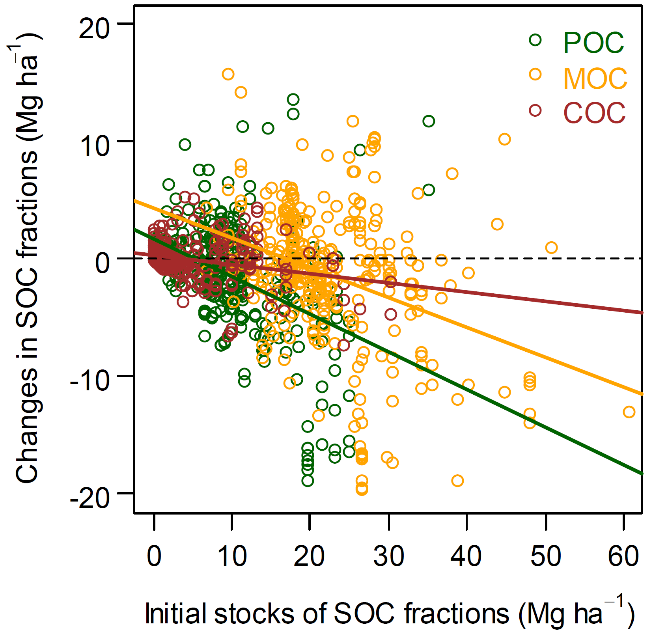Global Change BIology: Distinct controls over the temporal dynamics of soil carbon fractions after land use change
2020-05-20
On May 13, 2020, Professor Zhongkui Luo and Professor Zhou Shi published a research paper entitled "Distinct Controls Over the Temporal Dynamics of Soil Carbon Fractions After Land Use Change" in the international authoritative journal Global Change Biology.
Abstract:
Soil organic carbon (SOC), the largest terrestrial carbon pool, plays a significant role in soil‐related ecosystem services such as climate regulation, soil fertility and agricultural production. However, its fate under land use change is difficult to predict. A major issue is that SOC comprised of numerous organic compounds with potentially distinct and poorly understood turnover properties. Here we use spatiotemporal measurements of the particulate (POC), mineral‐associated (MOC) and charred SOC (COC) fractions from 176 trials involving changes in land use to assess their underlying controls. We find that the initial pool sizes of each of the three fractions consistently and dominantly control their temporal dynamics after changes in land use (i.e. the baseline effects). The effects of climate, soil physicochemical properties and plant residues, however, are fraction‐ and time‐dependent. Climate and soil properties show similar importance for controlling the dynamics of MOC and COC, while plant residue inputs (in term of their quantity and quality) are much less important. For POC, plant residues and management practices (e.g. the frequency of pasture in crop‐pasture rotation systems) are substantially more important, overriding the influence of climate. These results demonstrate the pivotal role of measuring SOC composition and considering fraction‐specific stabilization and destabilization processes for effective SOC management and reliable SOC predictions.

